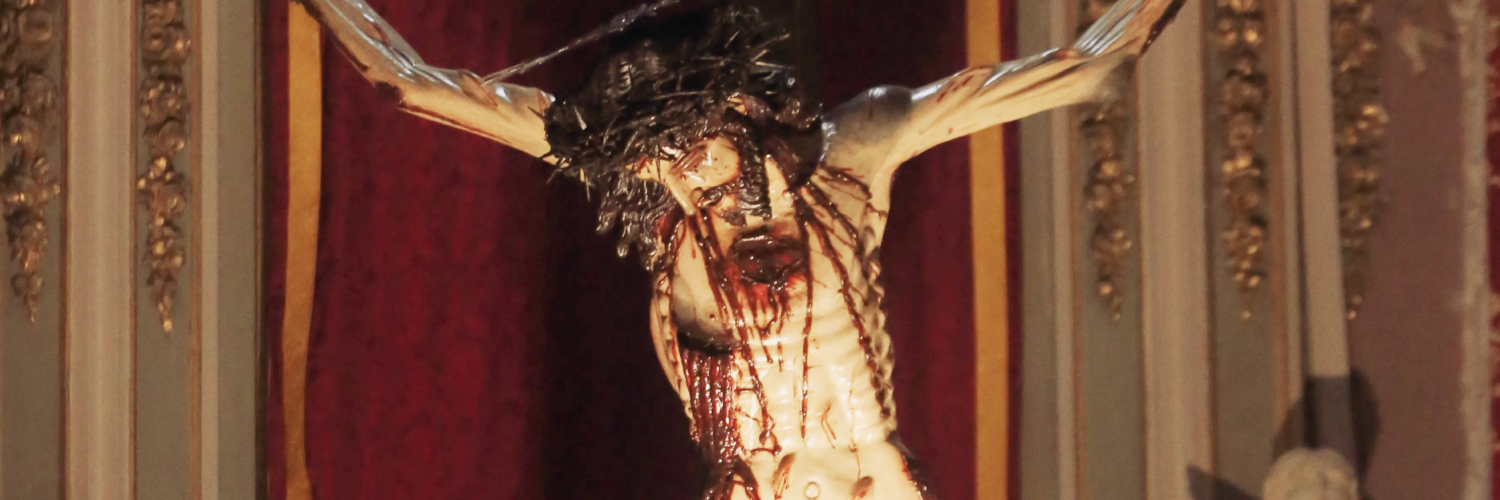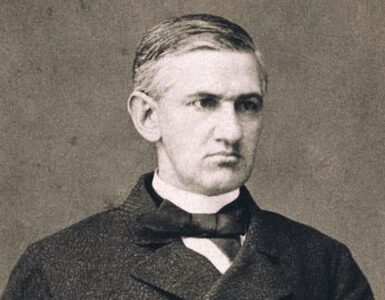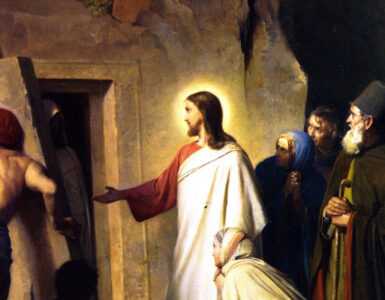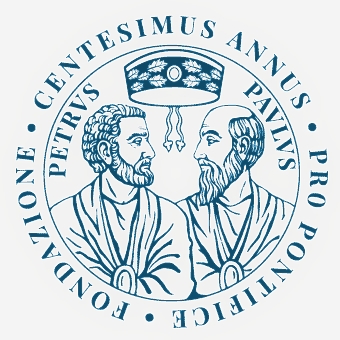While going to Valletta, the capital city of Malta, I feel naturally inclined to pay a visit to the Ta’ Ġieżu Crucifix. Who in Malta is not familiar, in some way or another, with this famous 17th-century which is normally attributed to Sicilian artist Franciscan friar Frate Innocenzo di Petralia?
When one looks intently at this Crucifix, which is placed at the Cappella della Passione in the Franciscan Church of St Mary of Jesus or Ta’ Ġieżu as we Maltese call it in our language, what strikes immediately the eye is the suffering of Jesus. It makes perfect sense that the artist must have certainly been influenced by the long standing Franciscan tradition and devotion of the contemplation of the suffering of Christ. St Francis himself composed The Office of the Passion of the Lord. It is interesting to note that even if the earliest biographies of St Francis do not say a word regarding this office however Fra Thomas of Celano, the earlier biographer of St Francis, tells us that St Clare learned and frequently recited with attachment the Office of the Cross which Francis, the lover of the Cross, had instituted. The office is combined of simple Biblical texts. Its very simplicity clearly shows St Francis’ ardent, loving devotion towards the Crucified as well as his singular method of prayer. This office is made up of five parts: (1) For the three last days of Holy Week and for week-days throughout the year; (2) For the Paschal season; (3) For Sundays and feast-days throughout the year; (4) For Advent and; (5) For Christmas and the days following, to the close of the Epiphany octave.
The Matins’ invitatory of the Office of the Little Office of the Passion of Our Lord, becomes the natural mantra as one is kneeling, standing or sitting meditating the realism of this cross: Christ is captured and put to scorn, scourged and crucified. Oh, come, let us adore Him! The artistic use of the terpentine resin, which is called ceralacca, with the intent of bring about that effect of thick, flowing blood, which comes from Christ’s crucified body, helps the beholder to realise, all the more, that thanks to His blood, Christ had sealed our salvation once and for all. It is not a sheer coincidence that ceralacca was employed in the middle ages precisely to seal important documents.
Naturally it comes to mind the words of the hymn we pray at the Matins of the Little Office of the Passion of Our Lord: Oh, may the Passion of the Lord,/ Whereby salvation is restored,/ The mind with love for Him inspire,/ Our solace and our hearts’ desire. In memory, let us ever hold,/ Christ’s thorny crown,/ His pains untold,/ The bitter cross whereon He died,/The nails, the lance that pierced His Side. And may we constantly recall/ The reed, the vinegar, the gall,/ The anguish of that last dread hour,/ Those Sacred Wounds whence graces shower. O, may these thoughts our souls imbue/ With sweetness of celestial dew,/ ‘Til, fostered by His tender care,/ The glorious fruits of grace they bear. O crucified, we worship Thee/ And beg with all our hearts that we/ May be united through Thy love/ With all the saints in Heav’n above. To Christ, the Lord of Majesty,/ Betrayed and sold to set us free,/ Who suffered on the cruel tree,/ Be praise and honour endlessly. Amen.
Obviously, there is another technique in the making of Ta’ Ġieżu Crucifix which helps the devotee to pray intensely. I am specifically referring to the parchment which Frate Innocenzo used so as to produce an extremely realistic representation of loose skin around the wounds. As we know, parchment is made out of lamb’s skin. The reference is so clear: Lamb of God who takes the sin of the world, have mercy on us.
Such an artistic detail as well as technique would frequently encourage me to pray the First prayer of the Fifteen Prayers which the Swedish saint, St Bridge, wrote to our Suffering Lord Jesus Christ.
O Jesus Christ! Eternal Sweetness to those who love Thee, joy surpassing all joy and all desire, Salvation and Hope of all sinners, Who hast proved that Thou hast no greater desire than to be among men, even assuming human nature at the fullness of time for the love of men, recall all the sufferings Thou hast endured from the instant of Thy conception, and especially during Thy Passion, as it was decreed and ordained from all eternity in the Divine plan.
Remember, O Lord, that during the Last Supper with Thy disciples, having washed their feet, Thou gavest them Thy Most Precious Body and Blood, and while at the same time Thou didst sweetly console them, Thou didst foretell them Thy coming Passion.
Remember the sadness and bitterness which Thou didst experience in Thy Soul as Thou Thyself bore witness saying: “My Soul is sorrowful even unto death.”
Remember all the fear, anguish and pain that Thou didst suffer in Thy delicate Body before the torment of the crucifixion, when, after having prayed three times, bathed in a sweat of blood, Thou wast betrayed by Judas, Thy disciple, arrested by the people of a nation Thou hadst chosen and elevated, accused by false witnesses, unjustly judged by three judges during the flower of Thy youth and during the solemn Paschal season.
Remember that Thou wast despoiled of Thy garments and clothed in those of derision; that Thy Face and Eyes were veiled, that Thou wast buffeted, crowned with thorns, a reed placed in Thy Hands, that Thou was crushed with blows and overwhelmed with affronts and outrages.
In memory of all these pains and sufferings which Thou didst endure before Thy Passion on the Cross, grant me before my death true contrition, a sincere and entire confession, worthy satisfaction and the remission of all my sins. Amen.
What St Bridget wrote in this prayer makes perfect sense if one just appreciates the crown of thorns of the Ta’ Ġieżu Crucifix, made of woven, most like vine, branches that powerfully evoke in the person of faith of the grapes, hence the Sacrament of the Eucharist.
Another important spiritual writing, this time a biblical text, which comes up into my mind and heart every time I worship this Crucifix is the reading taken from the Book of Wisdom 2:1a, 12-22, which the Church’s liturgy proclaimed on Friday of the Fourth Week of Lent:
The wicked said among themselves, thinking not aright: “Let us beset the just one, because he is obnoxious to us; he sets himself against our doings, Reproaches us for transgressions of the law and charges us with violations of our training. He professes to have knowledge of God and styles himself a child of the Lord. To us he is the censure of our thoughts; merely to see him is a hardship for us, Because his life is not like that of others, and different are his ways.
He judges us debased; he holds aloof from our paths as from things impure. He calls blest the destiny of the just and boasts that God is his Father. Let us see whether his words be true; let us find out what will happen to him. For if the just one be the son of God, he will defend him and deliver him from the hand of his foes. With revilement and torture let us put him to the test that we may have proof of his gentleness and try his patience.
Let us condemn him to a shameful death; for according to his own words, God will take care of him.” These were their thoughts, but they erred; for their wickedness blinded them, and they knew not the hidden counsels of God;neither did they count on a recompense of holiness nor discern the innocent souls’ reward.
How many today are making the same experience of the Ta’ Ġieżu Crucifix in a number of ways? How many, as this reading from the Book of Wisdom is suggesting, are suffering from being betrayed, bullied and are undergoing all such deplorable abuses simply because they love Jesus and stick to his never ending values? But the Psalm of that same day, which is following this marvelous reading, is giving them the sure hope that they are not alone in their struggle. The Lord is close to [their] brokenheartedness (Ps 34:19a). They are fighting this fight accompanied by the God of the brokenhearted and the oppressed. Here is the text for prayer:
R. The Lord is close to the brokenhearted.
The LORD confronts the evildoers,
to destroy remembrance of them from the earth.
When the just cry out, the LORD hears them,
and from all their distress he rescues them.
R. The Lord is close to the brokenhearted.
The LORD is close to the brokenhearted;
and those who are crushed in spirit he saves.
Many are the troubles of the just man,
but out of them all the LORD delivers him.
R. The Lord is close to the brokenhearted.
He watches over all his bones;
not one of them shall be broken.
The LORD redeems the lives of his servants;
no one incurs guilt who takes refuge in him.
R. The Lord is close to the brokenhearted.
The last and logical prayer while looking at Ta’ Ġieżu Crucifix is St Francis’ prayer before the Crucifix:
Most High, glorious God,
enlighten the darkness of my heart;
Give me right faith, sure hope, and perfect charity.
Fill me with understanding and knowledge,
that I may fulfill your command.
Innumerable are the graces Jesus gives to those who look at his miraculous effigy as presented in Ta’ Ġieżu Crucifix. Whilst in Malta go, visit and pray before it!




























